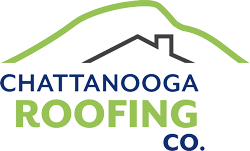How to Choose the Right Commercial Roofing Materials
Commercial roofs protect a building and everything inside it from the elements. They must be durable and have a long lifespan.
They also must be affordable to maintain and offer a range of aesthetic options for a wide variety of architectural styles. Learn more by clicking here.
There are several commercial roofing types that fit these requirements. Here are a few examples.
Shingles
Shingles are a popular roofing choice for homeowners and, because of their diverse appearance, many commercial buildings also choose to use them. They are cost-effective and offer many benefits, including resistance to weather, fire, and other environmental factors.
They are available in a variety of colors, designs, and profiles to suit any style and aesthetic of your building. They also help to improve energy efficiency and may come with a manufacturer’s lifetime warranty.
However, not all commercial roofs are suitable for shingle systems. For instance, if you plan to vent oil, greases, or fats onto your roof (like a restaurant would), you should avoid using a shingle system because it will break down quickly when exposed to these substances. A better option for your needs is architectural shingles, which are thicker than three-tab asphalt shingles and have a more appealing aesthetic. These shingles are also more durable and provide higher wind protection. They also often carry longer manufacturer’s warranties than three-tab shingles.
Metal
With facility managers prioritizing longevity, durability, and resilience, metal roofing systems are a go-to option. Metal roofs are also very energy-efficient, reflecting solar heat and reducing cooling costs during warm months. They can be combined with cool roof coatings for further energy savings.
Stainless steel, aluminum, and galvanized metal are commonly used for commercial roofing. Coatings like Galvalume offer a blend of zinc, aluminum, and silicon to provide greater corrosion resistance and improve longevity.
Standing seam panels display a sleek, modern appearance and are ideal for buildings in regions with heavy snowfall. The ribbed design adds structural strength to the roof, preventing ponding and leaks. Insulated metal panels combine roofing and insulation in a single product, saving on installation and construction costs. They are often a popular choice for low-sloped commercial and industrial facilities.
Durable and long-lasting, metal roofs require minimal maintenance. Annual inspections can identify early signs of damage and allow proactive repair to minimize impact on business operations.
Modified Bitumen
Modified bitumen roofing is an excellent option for commercial flat roofs. Its multiple layers make it durable and resistant to high winds and extreme temperatures. You can also add a reflective layer to the top of your modified bitumen roof to lower energy bills.
The base sheets of a modified bitumen roof are usually made from fiberglass or polyester. The next layer is the cap sheet which is typically installed with granules to provide weathering resistance or UV protection. The final ply is the modified bitumen membrane which can be applied with heat or cold adhesives depending on your needs. The multiple plys and the absence of seams make a modified bitumen roof highly waterproof and resistant to leaks.
One of the downsides to this type of roof is the strong odor that comes from the installation process. The spread and intensity of this odor depend on the area covered during installation. Therefore, it is best to have your roof installed when you are prepared to either relocate temporarily or deal with the smell for a few days.
Spray Polyurethane Foam
SPF is quickly becoming the roofing material of choice for industrial and manufacturing facilities looking for a sustainable, energy-efficient solution. The system consists of a base layer and an elastomeric roof coating.
Sprayed as a liquid, the foam expands to fill in any gaps and holes. It also acts as a thermal, air, and water/moisture barrier.
This insulation can be applied in a variety of ways, including directly to roof tiles and concrete slabs or into wall cavities. It’s available in open- or closed-cell varieties.
Closed-cell spray polyurethane foam has tiny cells that resemble inflated balloons stacked tightly together and are filled with gas. When dry, the resulting material has high strength and is extremely durable. It can even support a person walking across the roof without major distortion. That said, a regular maintenance program is still a good idea, as the foam can be damaged by hail, accidental punctures, and foot traffic. Click here for more interesting articles.

